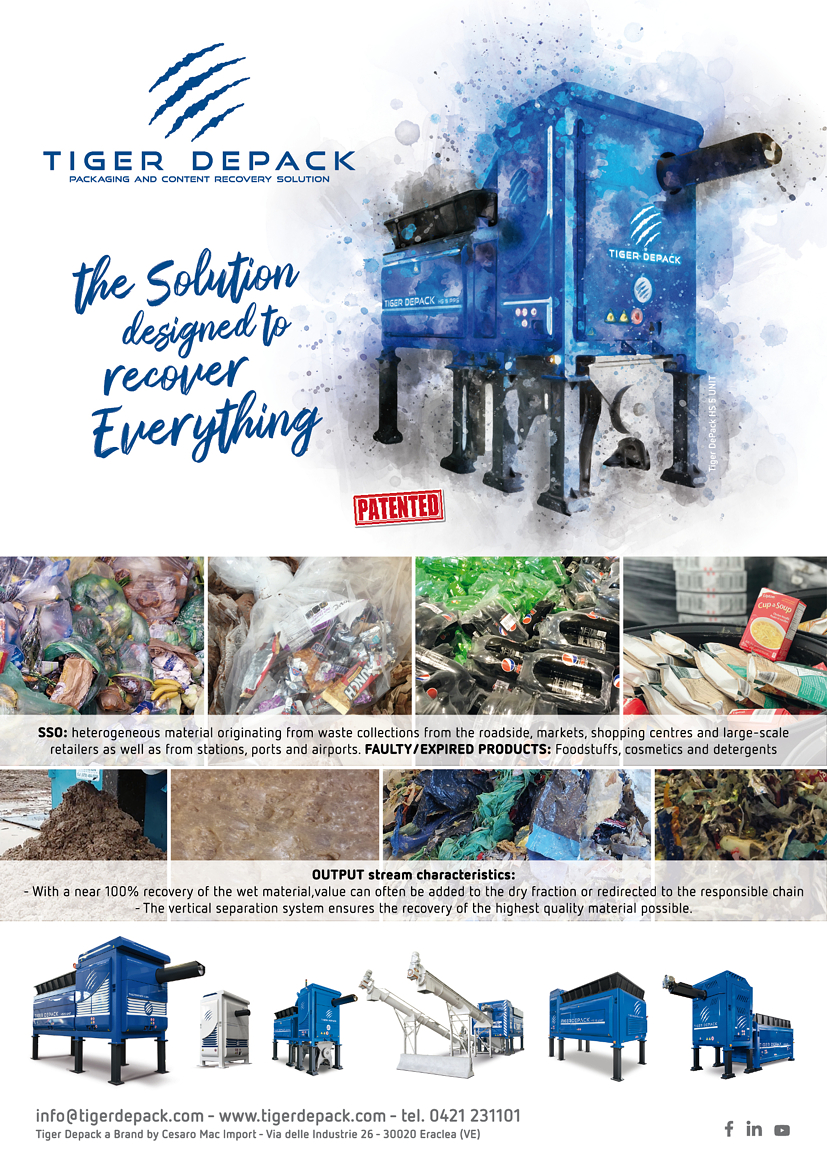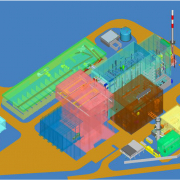Wastewater doesn’t lie: Corona-Virus recognized via Wastewater Treatment Plants
The uncertainty caused by the Corona-Virus or Covid-19 respectively is based on nescience about the number of people infected. Wastewater based epidemiology delivers a relatively new method to gain insights into the dissemination of the pathogen. Which possibilities this procedural method offers and which difficulties might occur are issues researchers all over the world try to investigate. Wastewater treatment plants play a key role.
A wastewater-based approach was already successful in fighting another virus. In 2013, polio was actively being transmitted in Israel. Several years ago, the national health department had set up a sewage surveillance system. The installation detected the germs in wastewater and gave the alarm. The Ministry of Health reacted, saved time to vaccinate the public, and none of the infected children was paralyzed.
Developing a method for detecting
This is a method whose perfection researchers all over the planet are chasing after. At the Arizona State University in Massachusetts, Rolf Halden and Olga Hart are tracking SARS-CoV-2 in US-wastewater. In Switzerland, scientists at the École Polytechnique Fédérale de Lausanne (EPFL) and the Swiss Federal Institute of Aquatic Science and Technology (Eawag) are developing a method for detecting the novel coronavirus in wastewater samples. Gertjan Medema, a microbiologist at KWR Water Research Institute in Nieuwegein, the Netherlands, detected genetic material of the virus in several treatment plants. Scientists in Valencia, Spain, found viral RNA in a series of longitudinal metropolitan wastewaters samples, while researchers from the Spanish National Research Council and Valencia University developed a molecular analysis system. Scientists from the Sorbonne University and Eau de Paris conducted a study on viral genome quantification in Paris wastewaters. Researchers from The University of Queensland and Australia’s national science agency CSIRO achieved the first step in developing an early warning surveillance system.
To estimate the prevalence
Specialists at Newcastle University, UK, and the University of Santiago de Compostela, Spain, worked with water industry partners Northumbrian Water and Labaqua, part of the SUEZ corporation, to monitor sewage from across networks in Spain and North East England to develop a way to estimate the prevalence of the Covid-19 virus across the regions. Under the aegis of the KTH Royal Institute of Technology in Stockholm, Sweden, wastewater was tested in Italy’s northern region, in Spain’s Catalonia, in some Turkish as well as Indian cities and parts of the Netherlands for two weeks. In Germany, experts from the Helmholtz-Center for Environmental Research, the German Association for Water, Wastewater and Waste and the Institute of Technology Dresden teamed up with several sewage treatment plant operators to investigate representative wastewater samples.
Undergoing an RT-qPCR process
Wherever those samples were collected, the next steps consist of preparing the material to concentrate the coronavirus from the sewage. The processing is difficult and complicated, as the viral substances must be separated from faeces and urine, even if an infected person might approximately excrete between 0.15 and 141.5 million viral genomes per liter of wastewater generated. According to the KTH Royal Institute of Technology, the samples then mostly undergo a multi-stage process called reverse-transcription quantitative polymerase chain reaction (RT-qPCR). “This stage basically unwinds the viral RNA and converts it into DNA, which is then further replicated so there are millions of copies – enough for a quantitative PCR instrument to detect the virus.” Sequencing techniques are used to confirm the viral presence in wastewater samples.
First achievements
The technique seems to work. In February 2020, specialists from EPFL and Eawag analyzed samples from Lausanne, Zurich and Lugano in Switzerland: They found a signal in wastewater from Lugano – where only one case had been identified at that point – and from Zurich, where only six had been realized. In March 2020, sewage samples in the Netherlands were analyzed against SARS-Coronavirus-2. Not only that fragments of nucleocapsid protein gene and envelope protein gene – as indicators of the SARS-Coronavirus-2 – could be found: The research funded by KWR Water Research Institute detected them as recently as the first cases of Corona were reported. The study‘s participants valued this as proof of a tool for monitoring the virus‘s circulation in the population. Another study on raw wastewater samples from wastewater treatment plants in Paris showed that the number of genome units increased accurately following the increasing level of regional Covid-19 diseases. And a decrease in genome unit quantities was observed as the number of new diseases declined as a consequence of the lockdown. More than that: The viral genomes were detected before the exponential growth of the epidemic began. The researchers assessed this as a method of quantitative monitoring for additional information. Comparably, in mid-March researchers at the Massachusetts Institute of Technology, Harvard, and Biobot, a startup that analyzes wastewater, examined sewage samples in Massachusetts. They predicted the infection of a few thousand people in the area – at the time just over 400 people were officially affected by the coronavirus.
A quicker route to “see” the virus
Studies have shown that SARS-CoV-2 can appear in faeces within three days of infection, and it is estimated that it takes between half a day and three days for the sewage to move from toilets to the treatment plants. That is much sooner than people need to develop symptoms, find a hospital and get an official diagnosis. Tamar Kohn, an environmental virologist at the Swiss Federal Institute of Technology in Lausanne, is convinced: “Seven to ten days can make a lot of difference in the severity of this outbreak.”
The samples are informative, the scientific community is on the same page. Epidemiologist Noel McCarthy, professor at Warwick Medical School, finds it useful that sewage monitoring can quantitatively reflect human infection. Researchers in the Netherlands told Deutsche Welle that “sewage water is a quicker route to ‘see‘ the virus in the population”. At the end of a wastewater sampling in the region of Valencia, Spain, the scientists balanced “that wastewater analysis is a sensitive and cost-effective strategy for Covid-19 epidemiological surveillance”. In an interview, Christoph Ort, contributor at Eawag, was confident that indications “will not only be detectable but also quantifiable – or countable, so to speak”. Warish Ahmed from the Australian public research agency CSIRO interprets the method as one that “could be used as an early warning tool for pandemic surveillance” and “a cost-effective way of tracking community-level infection”. The authors of the Paris study consider it an “alternative and possibly early tool”, especially “when investigations in humans are difficult for logistic, ethical or economic reasons”. And Zhugen Yang, biomedical engineer at Cranfield University underlines that “sewer sampling gives a fairly inexpensive, evidence-based image of the actual viral load in a community.”
Chemical reagents of 225,000 US-Dollar
The expectations on wastewater-based epidemiology – especially in terms of the coronavirus – are rising, and so do the estimations concerning the method’s coverage. In the opinion of environmental engineer Christoph Ort, sewage samples reflect what is excreted by the public within a few hours. For “wastewater doesn’t lie”. Therefore, he is sure that – according to current knowledge – one should be able to detect a few diseased individuals among 100,000 healthy people. Another source cites him with the words: “With samples from 20 large treatment plants distributed across Switzerland, we could monitor wastewater from around 2.5 million people.” Rolf Halden goes beyond that. He is the director of the Center for Environmental Security at ASU’s Biodesign Institute that studies wastewater from U.S. cities. His technique has the sensitivity and the potential to detect the signature of a single infected individual among 100 to two million people. If his method would be fully applied in the United States, about 70 percent of the population could be screened for SARS-CoV-2 by involving the national 15,014 wastewater treatment plants “at an estimated cost for chemical reagents of 225,000 US-Dollar”.
Haldens vision: “You could get a huge return on your investment and save many lives.” More than that: If a new testing system, of which Halden designed the program, would be fully funded, it could be implemented at the more than 100,000 wastewater treatment plants worldwide.
Two challenges to be accepted
However, according to the German Association for Water, Wastewater and Waste (Deutsche Vereinigung für Wasserwirtschaft, Abwasser und Abfall; DWA), we have to slow down. As mentioned in their latest press release, there are at least two challenges to be accepted. Firstly, the low concentration of viruses and RNA are subject to huge fluctuations, which makes it difficult to reliably record the sewage waste samples. And secondly, the sensitivity of common detection methods are not sufficient for the highly diluted and no more infectious viruses.
Material concentration is a well-known problem. Scientists representing the Queensland Alliance for Environmental Health Sciences in Australia, for example, realize the need to find out how much viral RNA is excreted in feces and extrapolate the number of infected people in a population from concentrations of viral RNA in wastewater samples. To quantify the scale of infection in a population from wastewater samples, researchers will also need to ensure that they are looking at a representative sample of what is being excreted by the population and not just one snapshot in time. Moreover, factors like temperature, organic matter and aerobic microorganisms influence the results. Already in 2009, an article provided information that at room temperature the coronavirus is reduced by 99.9 percent within 10 days, whereas at 4° C the inactivation lasts 100 days. But depending on the right local factors, like temperature and drain size, Rolf Halden and his colleague Olga Hart suspect to detect the virus if just one in every 114 people using the sewerage system is infected. And to avoid bad results and loss of information, Olga Hart additionally wants to measure close to virus hotspots.
Working on optimization
To find a solution for the second problem – the equipment –, scientists are working on the “bottleneck” of monitoring and optimization of sample preparation. Three methods stand at disposal: Lyophilization, Bar percolation and Polyethylenglycol precipitation. They have their pros and cons. The first is free of water, but lasts long; the others require a lot of personal or material. And all techniques can only function successfully if the sequences are automated and the results continuously evaluated. That is possible, says Zhugen Yang, biomedical engineer at Cranfield University’s Water Science Institute, U.K., counting on sewer sampling: “Using computer models that incorporate data on how many viral particles individuals shed and how they become diluted in sewage, it is even possible to translate detected viral concentrations into estimates of absolute numbers of infections in a sewage system’s catchment area.” Of course, this should happen more quickly as the handling of the material EPFL and Eawag collected: As reported, it would take a few weeks to analyze the over 300 samples currently in frozen storage.
Discover at an early stage
René Kallies, virologist at the Helmholtz-Center for Environmental Research, Germany, is optimistic to get results “under the threshold of 50 infected persons per 100,000 locals”. But he confesses that it is still a long way until integrated monitoring of wastewater will be operationalized. However, the method sounds “very promising”, Saxonian’s minister of science Sebastian Gemkow gave account: “If wastewater monitoring will function and be practicable across the country, it contains a huge potential in handling with the current SARS-CoV-2-pandemic and perspectively for comparable future pandemics.” Practically spoken: “If we expect another wave […], we can hopefully discover it at an early stage”, argues Saria Otani, molecular microbiologist at the Technical University of Denmark, Kopenhagen.
(GR32020, Page 34, Photo: Couleur / Pixabay)










